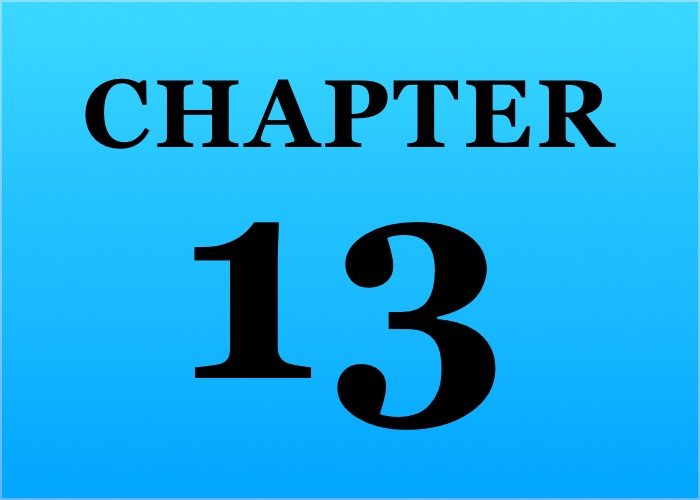The Key Elements Of A Chapter 13 Bankruptcy Plan

Chapter 13 is a plan for debtors who wish to keep some of their secured property such as a home or a car. A security interest is created most often when a consumer buys a new product such as a home, auto, or tools for doing work.
Because the consumer items are expensive, the debtor needs to take out a loan. The creditor wants to have some assurance, other than the credit-worthiness of the consumer, to insure it will get paid. To protect their loan, the creditor then requires that the consumer agree that if they don’t pay the loan, the creditor can repossess the item that was purchased.
Debtors can also agree that creditors have a security interest (a right to repossess collateral on default) even after they’ve purchased the item. Many homeowners, for example, agree to put up the equity in their home to get a second or a third loan. The equity is the value of the house minus what the debtor owes on the house. A second or third loan is usually secured by a second or third mortgage.
The Means Test
Debtors who fail the bankruptcy means test are required to file a Chapter 13 bankruptcy. Before 2005, debtors could get rid of all of their unsecured debts by filing a Chapter 7. Creditors complained that some debtors did have an ability to pay off some of the money they owed.
They pressured the US Congress to make some changes and Congress agreed. In 2005, the new Bankruptcy law was enacted to force some debtors to make payments. Congress created a means test to determine if the debtor had an ability to pay.
The means test looks at the median income of the debtor for the geographical area where the debtor lives. If the debtor makes more than the geographical median then the debtor will probably have to file a Chapter 13 and pay some of the debts that are owed.
There are some extra conditions that may allow higher income debtors the ability to still file a Chapter 7 bankruptcy.
Non-dischargeable debts
Some debtors do not have secured assets and have income that meets the means test and still file a Chapter 13. A main reason these types of debtors file is because they have debts that are non-dischargeable.
Non-dischargeable debts include student loans, some taxes, and domestic support orders. Non-dischargeable debts have to be paid. The reason for the Chapter 13 bankruptcy is because many debtors get behind on their student loans, support orders, taxes and other non-dischargeable debts.
A chapter 13 lets the debtor take 3 to 5 years to pay the arrears while they continue to pay the monthly payments that are due.
Chapter 13 Plans – Key Elements
Legal Review
The first key is to review your financial situation with a bankruptcy lawyer. The lawyer will explain your Chapter 7 and Chapter 13 options as well as options you may have outside of bankruptcy such as renegotiating some of your loans.
If Chapter 13 is viable, the lawyer will review your assets, who the secured creditors are and the value of the assets and the security interests.
The bankruptcy lawyer will also review your income and expenses to see how much money you can really afford. The attorney will then explain that paying off the secured loans is a main priority. The attorney will then prepare a plan based on your financial information which should satisfy the Trustee and Bankruptcy Judge that you, the debtor, can create and meet the terms of a viable plan.
The Plan
The Chapter 13 bankruptcy plan
Some bills have to be paid in full when you file the plan. The first set of bills are called administrative claims. Administrative claims include the filing fee, the trustee’s commission and the lawyer fees if you employ a lawyer to represent you. The trustee normally gets about 3 to 10 percent of each monthly payment.
The priority and non-dischargeable debts have to be paid in full too! These include child support, alimony, most tax obligations, money you owe to your employees and money/contributions that you owe to an employee benefit fund like a pension and student loans.
Arrears on secured items and the future monthly payments on secured items have to be paid as well. For example, if you own a home and you owe $20,000 in arrears on the home and have a monthly mortgage payment of $1,000 a month – the plan requires that the debtor pay $1,000 a month plus spread out the $24,000 over a 3 to 5 year period.
For a 5 year plan, this means the payment on the home will be $1,000 plus $400 a month ($24,000 divide by 60 payments) for a total of $1,400 a month. The same sort of logic applies to keeping your car.
That leaves you with unsecured debts
The keys are the amount of the unsecured debts, how much disposable income is left after the administrative, priority, non-dischargeable and security interest bills are addressed. It also depends on the length of the plan. Most debtors pay just a small percentage of what they owe.
The length of the plan payments
This depends on your average income for the six months prior to the filing of the bankruptcy. If the average income is above the median for the area where you live (you’re filing because you failed the means test), then the plan has to be the full 5 years. Otherwise, the plan can be any period between 3 to 5 years depending on what’s comfortable.
Leave your response!
You must be logged in to post a comment.